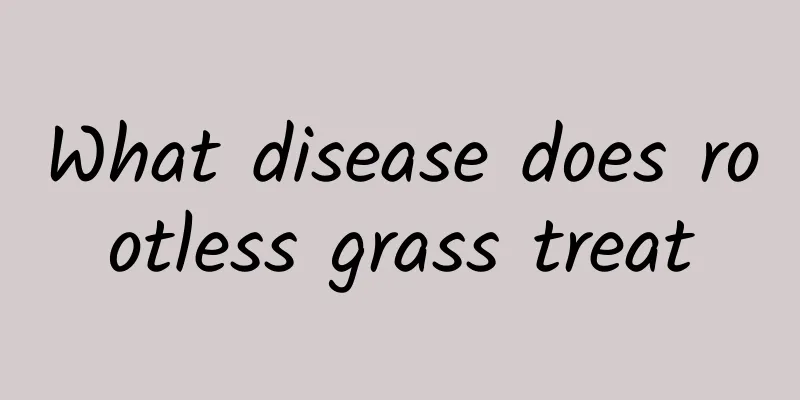What is the dosage of Eucommia ulmoides

|
Many people like to combine some Chinese medicinal materials to regulate their bodies. Some Chinese medicinal materials can be eaten as food, while some Chinese medicinal materials need to be used in controlled amounts. If eaten too much, it may cause harm to the body. Eucommia ulmoides is a commonly used Chinese medicinal material. So what is the dosage of Eucommia ulmoides? Below I will introduce to you the effects, functions and usage of Eucommia ulmoides. 1. The efficacy and function of Eucommia ulmoides Nourishes the liver and kidneys, strengthens the tendons and bones, and stabilizes the fetus. It is used for kidney deficiency, low back pain, weak muscles and bones, bleeding during pregnancy, fetal movement disorder, hypertension, etc. 2. Usage and Dosage of Eucommia ① For oral administration: decoct in water, 6-15tg; soak in wine or make into pills or powder. ② 6 to 10 grams. 3. Taboos of Eucommia Suitable for: middle-aged and elderly people with insufficient kidney qi, pain in the waist and knees, weak legs and feet, and residual urine; suitable for women with weak constitution, weak kidney qi, fetal leakage and habitual miscarriage to protect the fetus; suitable for people with sequelae of polio, children who walk too late, and weak lower limbs; suitable for patients with hypertension. Taboo: Eucommia ulmoides has mild nature and flavor, nourishes the liver and kidneys, and has no contraindications. Those with yin deficiency and excess fire should take it with caution. ① "Compendium of Materia Medica" says: "It is bad for snake skin and Yuanshen." ② "Ben Cao Jing Shu": "It is not suitable for people with kidney deficiency and blazing fire. If used, it should be taken with Phellodendron chinense and Anemarrhena asphodeloides." ③ "Depei Materia Medica": "It is forbidden to use if it causes internal heat and dryness of essence and blood." 4. Prescriptions for Eucommia 1. Combined with Achyranthes bidentata, it can nourish the liver and kidneys and strengthen the tendons and bones. It is often used to treat low back and leg pain and weakness in the feet caused by liver and kidney deficiency. 2. Combined with Dipsacus asper, it can nourish the liver and kidney, benefit the waist and knees, and consolidate the Chong and Ren meridians. It is often used for various symptoms caused by liver and kidney deficiency. 3. Combined with Psoralea corylifolia, it warms and nourishes the kidney yang, and also nourishes the spleen and liver. It not only astringes the lower abdomen, but also consolidates the Chong and Ren meridians. It is often used for impotence due to kidney yang deficiency, coldness and weakness in the lower abdomen, cold pain in the waist and knees, and spermatorrhea and enuresis due to weak lower abdomen. It can also be used for soreness and weakness of the waist and knees due to liver and kidney deficiency, restless fetal movement, and diarrhea due to spleen and kidney yang deficiency. 4. Combined with Acanthopanax Cortex, it can not only strengthen the muscles and bones but also eliminate rheumatism. It is a tonic and purgative medicine pair, suitable for treating liver and kidney deficiency, rheumatism invading the muscles and bones, which causes low back and leg pain, sore feet and knees, joint discomfort, and weakness of the lower limbs. 5. Extended reading: Eucommia ulmoides plant morphology A deciduous tree, the bark, leaves and fruits have silvery-white filaments when broken. The bark is gray, the twigs are light brown or yellowish brown, with lenticels, and the pith is lamellar. The leaves are alternate, elliptical or ovate-elliptical, 6-8 cm long, 3-7.5 cm wide, gradually pointed at the apex, rounded or broadly cuneate at the base, serrated at the margins, and hairy on the veins below. The flowers are unisexual, dioecious, without perianth, open before leaves, and solitary at the base of new branches; male flowers have 5 to 10 stamens and very short filaments; female flowers have a narrow and long ovary with a two-forked style at the top. The samaras are flat and thin, narrowly oval, and about 3.5 cm long. The flowering period is from March to May, and the fruiting period is from July to September. Growing in mountain forests or in cultivation. It is mainly produced in Sichuan, Shaanxi, Henan, Guizhou and Yunnan; it is also produced in Jiangxi, Gansu, Hunan and Guangxi. |
<<: What are the functions of Eucommia chopsticks
>>: What are the functions of Eucommia chopsticks?
Recommend
The efficacy and function of small white flower
The nutritional value of the small white flower s...
Daily Science | Fibonacci Sequence: The Shining Pearl in the Crown of Mathematics
Fibonacci sequence - 1, 1, 2, 3, 5, 8, 13, 21... ...
If you are angry, just vent it out? It turns out that we have been doing it wrong all along.
It is inevitable to feel angry and furious in dai...
Customs intercepted a 4-meter-long giant king cobra! Netizen: A close-up view made me stunned
Recently, Zhangjiagang Customs under Nanjing Cust...
Hu Q&A丨What does growing taller have to do with it?
"Hello, I am the editor of China Science Exp...
The efficacy and function of sea harrier fish
Traditional Chinese medicine requires the use of ...
National Ear Care Day丨People who love to clean their ears, you need to know these questions
Today (March 3) It is the 23rd "National Ear...
Be careful when doing outdoor activities in summer, as some people have already been shocked by this "sweet little thing"
"Buzz, buzz, buzz..." When you are enjo...
"Internet celebrities in the field of traditional Chinese medicine" - the three musketeers of detoxification
Today I will talk to you about the "Chinese ...
Wearing the same extravehicular space suit! Here are the hard-core knowledge points about extravehicular space suits
Not long ago, the Shenzhou 14 astronauts went out...
Desert Cistanche
Many people may not know what Cistanche desertico...
How to eat white Poria cubes
Many people have seen the Chinese medicine white ...
The efficacy and function of Tibetan pepper
There are many common Chinese medicinal materials...
Controlling sugar does not mean quitting sugar, the real sugar control manual is here!
《Cotton Swab Medical Science Popularization》 Tao ...
"Fang Hua" is popular, Miss Wang's contact lenses are exposed?
Recently, the increasingly popular "Fang Hua...









